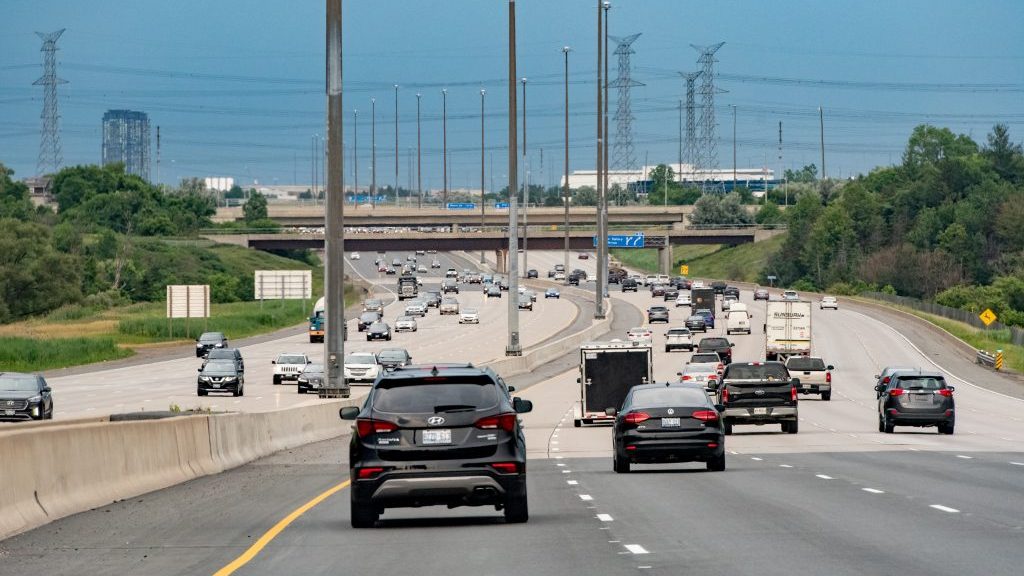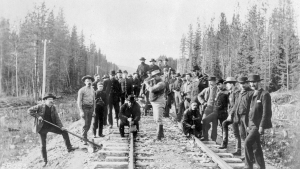Highway 413 is not a transportation plan, but it is an arm of a plan to push sprawl into places where it otherwise wouldn’t happen, said Environmental Defence’s Phil Pothen, during a recent Transport Futures webinar.
But proponents say it’s needed to accommodate expansive growth in Ontario.
“It is really a publicly subsidized loss leader to prop up an offer from sprawl developers which otherwise wouldn’t be very appealing,” said Pothen, the program director with the environmental advocacy group, at the session, Highway Stakeholders: Diverse perspectives on the future of highways.
Pothen showed attendees a map of the proposed plan in the Greater Golden Horseshoe and in the Greater Toronto and Hamilton Area and said the proposed Highway 413 route runs through areas that are not developed now.
“It is very clear that the route of Highway 413 is not designed to address problems or transportation issues or bottlenecks in transportation for current GTA residents,” Pothen claimed. “These are areas that we would never touch without the 413.”
Following the webinar, Nadia Todorova, executive director of the Residential and Civil Construction Alliance of Ontario (RCCAO), commented the western part of the GTA where Highway 413 is going to be is the fastest growing part of the region and that growth will increase the demand for transit systems, highways, roads, bridges and housing.
“New infrastructure like Highway 413 is going to enable more housing to be built and to meet this growth,” said Todorova. “Part of the reason why Highway 413 is so important is it’s not only going to be a highway that connects the 400 and 401 without bringing that traffic into Toronto, but it’s going to create those really important transportation corridors through Halton, Peel and York regions and really build up that transit network that is missing currently.”
The amount of trucks on the road is also expected to double by 2051, she added.
“We need to be able to be planning for that future growth, not only in terms of moving people but also moving goods as well,” Todorova noted.
She added the RCCAO supports both transportation and transit expansion.
“We need both,” said Todorova. “It is not a matter of choosing one over the other. It’s about having a system-wide approach to make sure that we are intensifying across multiple modes to make sure we give people the choice whether they want to live in the city or whether they want to live outside the city.”
A “sensible” solution to existing transit and transportation issues, Pothen said, is to “focus on making full utilization of Highway 407 and that means making it free or subsidizing it for truckers so that truckers use the infrastructure that is already available.”
A comprehensive plan is needed, he said, to ensure the number of car trips and the demand for individual commuters to use these highways is reduced.
“We want to use the next 30 years of population growth not to sprawl further outwards but to fix the mistake that is the past half century of land use planning,” said Pothen. “So that means converting…all of our existing low-density subdivisions into the kinds of communities that we know already, even here in Canada, that do not generate a lot of road trips.”
Supporting the Stop the 413 campaign means uniting people who want to protect the Greenbelt, want to stop sprawl, want to stop Highway 413 around a realistic complete alternative to doing these things, Pothen explained.
People in Ontario want to see Highway 413 built, Dakota Brasier, senior communications adviser and press secretary to the minister of transportation, said in an email to the Daily Commercial News.
“The people of Ontario and Peel Region spoke loud and clear when they re-elected our government with the second largest majority in Ontario history,” she noted. “Work is well underway to advance this critical infrastructure project, which will help alleviate traffic congestion, support good jobs and keep people and goods moving across the Greater Golden Horseshoe.”
In terms of impact, the project is following Ontario’s environmental assessment process.
“This will include an air quality and Greenhouse Gas impact assessment, among other studies, to ensure the environment remains protected,” said Brasier. “We developed the preferred route for the Highway 413 while keeping in mind the critical need to mitigate impacts to the Greenbelt. As the project moves ahead, we will continue to work with stakeholders to carefully consider all potential effects it may have on the Greenbelt.”










Recent Comments
comments for this post are closed